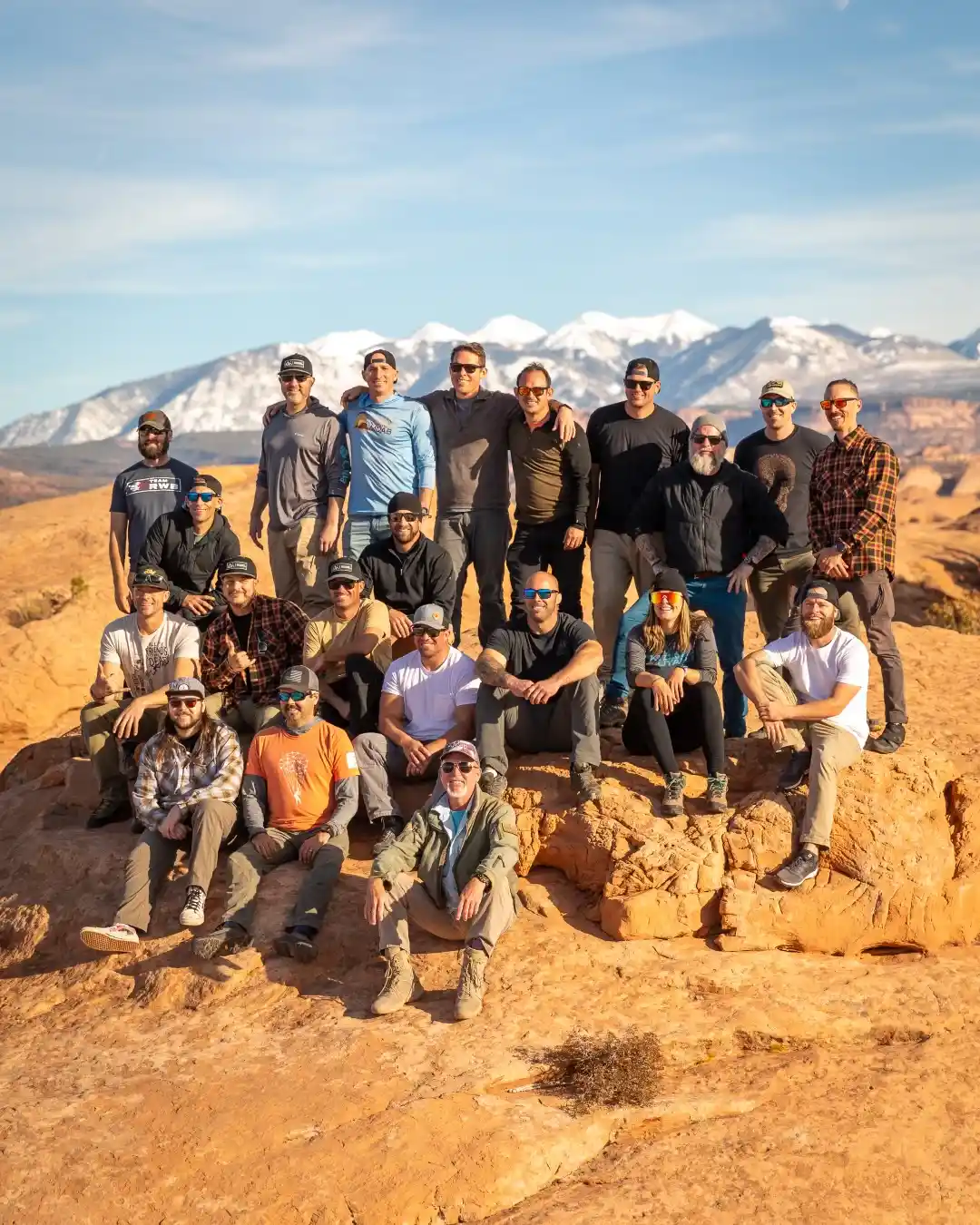Perhaps the most recognizable aspect of yoga is a set of physical poses, practiced to strengthen and stretch the body. Ask around town, however, and you will discover that Moab’s residents use yoga for everything from relaxation to deep philosophical awareness.
Yoga originated in India, not as a workout program but as an all-encompassing discipline to unify the body, mind, and soul. There are eight elements to a full yoga pursuit: universal ethics, personal discipline, the physical poses (called asanas), controlled breathing exercises, mastery of the physical senses, mental concentration, meditation, and, finally, a state of complete truth and bliss that is rarely attained.
Two thousand years later and half a world away, yoga persists in various incarnations, in western culture generally and right here in Moab. Countless cultures, theories, and studies have been combined with yoga to produce an array of approaches to and perspectives on the pursuit.
“Some people are more traditional,” said Ambika Aote, who teaches an ecstatic breath class at Sol Kula, one of Moab’s downtown studios. “They follow a specific form. Others are more eclectic and free-flowing.”
Aote puts herself in the latter category. In addition to yoga, Aote teaches ecstatic dance and offers shamanic healing sessions. She emphasizes the flow of energy — how energy in the body is related to energy in the mind. Aote points out how different poses nurture not only the muscles and joints, but specific organs and glands in the body, which in turn correlate to various aspects of our complete selves.
Don Leathers is a naturopathic physician in Moab. He teaches a weekly Qi Gong (chee gong) class at the Moab Arts and Recreation center.
Qi Gong is a form of “internal art” that originated in China. Qi Gong, like yoga, teaches the connection between the body and the soul. Some of the poses are similar to those seen in Indian yoga, but it is performed mostly as flowing motion rather than static positions.
Qi gong can be a workout, and can provide many physical health benefits. With deeper involvement, however, the physical practice becomes a pathway to a spiritual awakening. Leathers described qi gong as “preparing the body as a vessel for that higher energy, that spiritual truth.”
Not everyone is necessarily searching for enlightenment through yoga. Ed Oak has lived in Moab for several years. He is a guide for Desert Highlights Canyoneering company, and an avid rockclimber in his free time. He values yoga as a cross-training activity.
“It helps me improve flexibility, while getting stronger at the same time,” he said of his practice.
Those who strive for a deeper meaning through the internal arts don’t see a problem with that. Leathers’ class is open to all levels.
“You can step in to a qi gong class and be met right where you’re at, and not any further,” he said. “It’s always safe, always nourishing.”
Aote agreed that anyone can benefit from yoga, regardless of age, fitness, flexibility, or philosophy. In fact, she believes that any time we are aware of our breath and focusing on the present, it is an exercise in yoga.
“Everything is yoga,” she said with a smile. “Mountain biking is yoga.”
Perhaps the same qualities that attract outdoor enthusiasts to Moab make it appealing to those who study internal arts. Wild, open spaces facilitate both reflection and physical recreation.
Leathers described it as a “healing landscape.”
Healing can apply to many things—from a crick in your neck, to chronic fatigue, to persistent anxiety. Yoga enthusiasts encourage people of all abilities to explore the practice.
“What keeps us from walking in the door, is our preconceptions,” Leathers said.



![Santa at City Market [2024]](https://moabsunnews.com/wp-content/uploads/2024/12/IMG_0052.jpeg)
